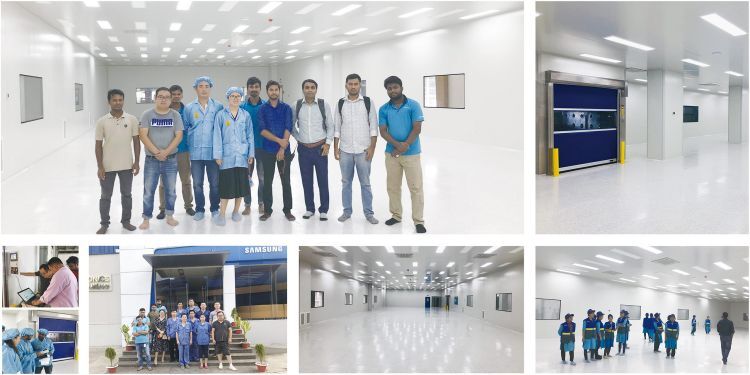Cleanroom Workshop Maintenance: Tips and Best Practices
- 2024-01-31
- View 11
Cleanroom workshops are specially designed facilities that provide a controlled environment for manufacturing, assembling, and testing products that require a high level of cleanliness. These products include microelectronics, pharmaceuticals, medical devices, and precision instruments. The controlled environment in cleanroom workshops helps to minimize the levels of contaminants such as dust, microbes, and airborne particles that can negatively affect the quality and performance of the products.

Types of Cleanrooms
Cleanrooms are classified based on the level of cleanliness required for the products being manufactured. The classification of cleanrooms is determined by the maximum number of particles per cubic meter of air, which is measured by particle size. The most common cleanroom classifications are:
ISO Class 1 to 9
The ISO (International Organization for Standardization) classification system measures the number of particles per cubic meter of air by particle size. ISO class 1 cleanrooms have the lowest particle count, while ISO class 9 cleanrooms have the highest particle count.
USP <797>
USP (United States Pharmacopeia) <797> is a standard that specifies the requirements for sterile compounding in pharmaceutical and medical device manufacturing. USP <797> cleanrooms are classified based on the particle count by particle size and air changes per hour.
GMP
GMP (Good Manufacturing Practice) is a standard that ensures the quality and safety of pharmaceutical, medical device, and food products GMP cleanrooms are classified based on the particle count by particle size and air changes per hour.
Components of a Cleanroom Workshop
Cleanroom workshops consist of several components that work together to maintain a controlled environment. The essential components of a cleanroom workshop are:
HVAC System
The HVAC (Heating, Ventilation, and Air Conditioning) system in a cleanroom workshop is designed to provide a continuous flow of filtered air to remove contaminants and maintain the required temperature and humidity levels.
Airlocks
Airlocks are used to prevent contamination from entering the cleanroom workshop. They consist of two doors that open and close in a specific sequence to maintain the required pressure in the cleanroom.
Cleanroom Garments
Cleanroom garments such as gowns, gloves, and masks are worn by the personnel working in the cleanroom workshop to minimize the release of contaminants from their bodies.
Lighting
The lighting in a cleanroom workshop is designed to provide uniform and shadow-free illumination without generating excessive heat.
Cleanroom Equipment
The equipment used in a cleanroom workshop is designed to minimize the release of contaminants and maintain the required level of cleanliness.
Maintenance of Cleanroom Workshops
Regular maintenance of a cleanroom workshop is critical to ensure its proper functioning and effectiveness. The maintenance activities that should be performed regularly are:
Daily Maintenance
Clean the floors, walls, and ceilings with a non-shedding mop or vacuum.
Check and replace the HEPA filters as needed.
Clean the air shower nozzles with compressed air.
Check and record the temperature and humidity levels.
Weekly Maintenance
Clean the lighting fixtures and replace any burnt-out bulbs.
Inspect the cleanroom garments for damage and replace as needed.
Check the airlocks for proper functioning.
Monthly Maintenance
Inspect the ductwork and air handling units for clogging or damage.
Test the particle counters and record the results.
Inspect and clean the HVAC system.
Quarterly Maintenance
Inspect and replace any damaged equipment.
Perform a detailed inspection of the cleanroom workshop.
Inspect and replace any damaged seals or gaskets.
Conclusion
Cleanroom workshops are critical for manufacturing, assembling, and testing products that require a high level of cleanliness. The controlled environment in cleanroom workshops helps to minimize the levels of contaminants and ensure the quality and performance of the products. Regular maintenance of cleanroom workshops is essential to ensure their proper functioning and effectiveness. By following the maintenance activities outlined above, cleanroom workshops can continue to provide a controlled environment for the manufacture of high-quality products.
FAQs
1、What is the purpose of a cleanroom workshop?
A cleanroom workshop is designed to provide a controlled environment for manufacturing, assembling, and testing products that require a high level of cleanliness.
2、How are cleanrooms classified?
Cleanrooms are classified based on the level of cleanliness required for the products being manufactured. The classification is determined by the maximum number of particles per cubic meter of air, which is measured by particle size.
3、What components are included in a cleanroom workshop?
The essential components of a cleanroom workshop are the HVAC system, airlocks, cleanroom garments, lighting, and cleanroom equipment.
4、Why is regular maintenance of a cleanroom workshop important?
Regular maintenance of a cleanroom workshop is critical to ensure its proper functioning and effectiveness in maintaining a controlled environment.
5、What maintenance activities should be performed on a daily basis in a cleanroom workshop?
Daily maintenance activities in a cleanroom workshop include cleaning the floors, walls, and ceilings, checking and replacing HEPA filters, cleaning air shower nozzles, and checking and recording temperature and humidity levels.
More of your interest
Cosmetic Production Cleanrooms What Conditions Need To Meet
